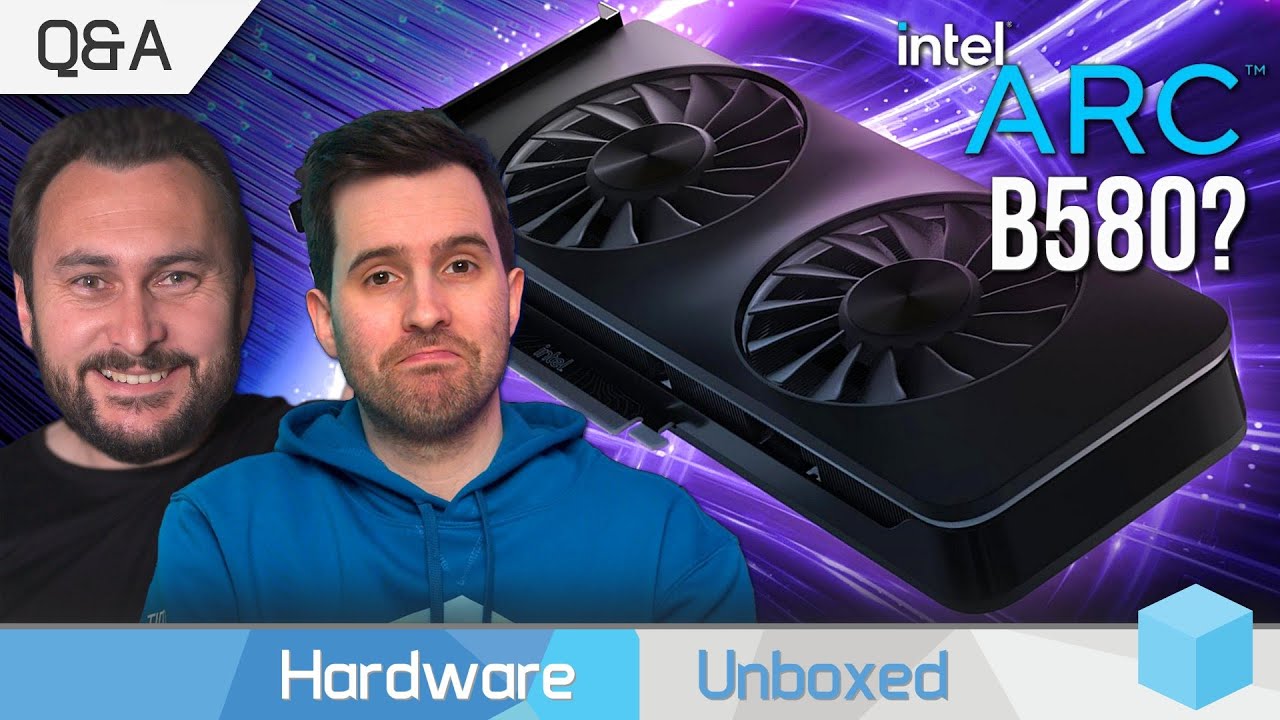The video from Hardware Unboxed discusses Intel’s upcoming Arc B580 and Battlemage graphics cards, examining the challenges Intel faces in performance and market positioning against competitors like AMD and NVIDIA. The hosts emphasize the importance of price-to-performance ratios and the need for compelling mid-range products while sharing their experiences with benchmarking and product testing.
The video features a Q&A session from Hardware Unboxed, discussing various topics related to Intel’s upcoming products, particularly the Arc B580 and its potential impact on gamers. The hosts begin by addressing the recent issues with Intel’s Arrow Lake launch, suggesting that the performance has been underwhelming compared to AMD’s offerings. They speculate that the team behind Arrow Lake may have been diverted to address issues with Raptor Lake, leading to a less-than-optimal product. The discussion highlights the challenges Intel faces in balancing power efficiency and performance, expressing hope that future iterations will improve upon the current architecture.
As the conversation shifts to graphics performance, the hosts discuss how ray tracing affects CPU performance and whether high-end CPUs like the AMD 9800 X3D would be necessary for high refresh rate gaming. They emphasize that while ray tracing can increase CPU load, the overall performance is often limited by the GPU. The hosts suggest that for gamers looking to achieve high frame rates, investing in a powerful CPU is essential, especially as modern games often struggle to exceed 100 FPS even with high-end hardware.
The discussion then transitions to the anticipated Intel Battlemage graphics cards, with the hosts pondering what price-to-performance ratio would be necessary for them to endorse these products over competitors like NVIDIA and AMD. They express that, historically, AMD’s GPUs need to be at least 10-20% cheaper than their NVIDIA counterparts to be considered competitive. The hosts note that the upcoming Battlemage products will likely be positioned in the mid-range market, which could impact their performance and pricing strategy.
The hosts also delve into AMD’s strategy of focusing on entry-level and mid-range GPUs, questioning whether this approach will successfully gain market share. They highlight the importance of product segmentation and the need for AMD to deliver compelling products that can compete effectively in the market. The conversation touches on the historical context of AMD’s product launches and whether they can capitalize on the current market landscape.
Finally, the video wraps up with a light-hearted discussion about the challenges of benchmarking and the frustrations that come with it, particularly regarding shader compilation times and inconsistent performance across different GPUs. The hosts share their experiences with companies and the complexities of product testing, emphasizing the importance of accurate information for consumers. They conclude by encouraging viewers to support the channel through Patreon and YouTube’s join feature, while also joking about their own work-life balance and the joys of enjoying the outdoors.
